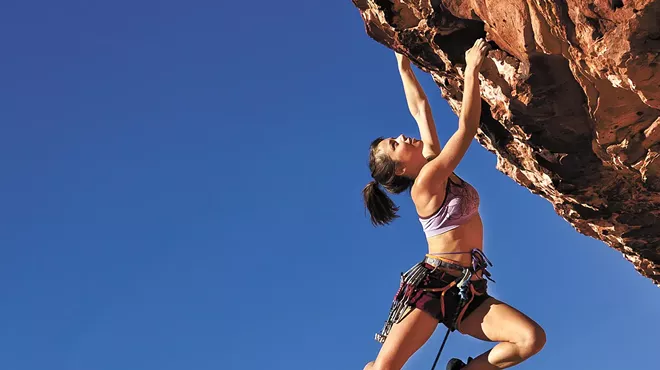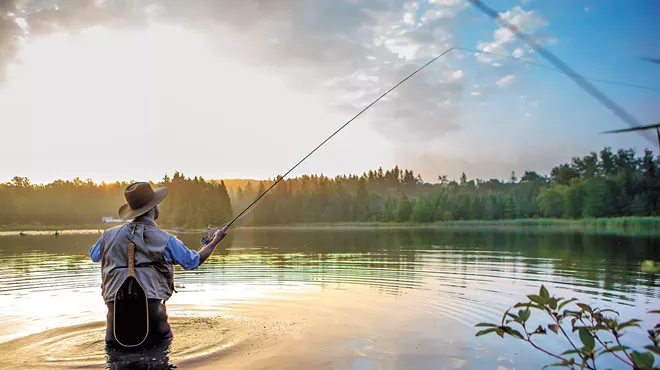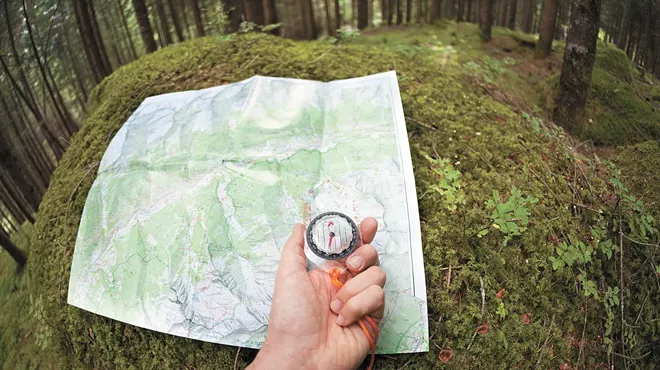The Inland Northwest seems on the surface like a near-desert compared to the rain-soaked lands west of the Cascades, but look closer and you'll find water everywhere. From the massive glacial lakes of North Idaho down to the almost pond-sized water bodies pockmarking the region, and the many rivers that flow between them all, the Inland Northwest truly is a paradise of recreation.
On a hot summer's day, of which we've already had quite a few, one of the easiest ways to stay cool is by heading to the water.
"Over the summer, our primary focus is getting people outside and on the water," says Ryan Griffith, assistant recreation director for outdoor programs at Spokane Parks and Recreation. "We live in an amazing area that has flatwater sections of the Spokane River, [and] we have an abundance of lakes in our area that we get to go out and paddle."
You don't need to have any experience out on the water to enjoy our region's natural splendor, though. As long as you're willing to give it a go, with an organization like the Parks Department or on your own, you can be at ease on the water this summer by taking a few precautions.
"If you're new to it, you want to make sure that you have the right equipment and you plan ahead and prepare," says Griffith. "The key thing is to have a PFD (personal flotation device — i.e., a life jacket) and always wear it, no matter what. That's the single most important thing you can do if you go out and paddle."
While the dramatic falls in the heart of downtown and the rapids that cut through Bowl and Pitcher may dominate the postcards and promotional materials put out about Spokane, the river isn't just whitewater. The shady and scenic Plese Flats in Riverside State Park is a section of the Spokane River perfect for paddleboarders of all experience levels. If you don't have your own gear, sign up for one of the Parks Department's two guided tours of the area on Aug. 8. All supplies, including paddles, boards and PFDs, are provided for just $25.
If you're looking to get a bit closer to nature and farther from the bustle of the city, without having to make much of a drive, the Little Spokane River Natural Area is well worth a trip. Being a natural area, activities on the water are rather restrictive. Canoes, kayaks and paddleboards are allowed, but inflatable rafts and tubes, motorized boats and even swimming are prohibited. It takes about three hours to paddle the leisurely, meandering course from the put-in at St. George's trailhead to the takeout at Nine Mile. If you've got your own supplies, including a PFD and safety whistle, the Parks Department operates a $10 shuttle, from 10 am to 4 pm Saturdays and Sundays through Sept. 5, that will haul you and your boat from the takeout back to your car at the put-in.
Wanting a more stationary experience than the moving water of a river? Look to the lakes.
Lake Coeur d'Alene is among the closest and most popular in the region, but that doesn't mean you'll have to fight through a crowd if you visit. Sanders Beach, located directly to the east of Tubbs Hill, is something of a locals' spot on the water, great for lounging away from the hordes of tourists flocking to City Beach all season long. Just out of town to the east is the rocky but scenic Higgens Point. It's not a towel-on-the-sand beach, but it's a great place to avoid the crowds altogether without having to leave civilization in the process. ♦




